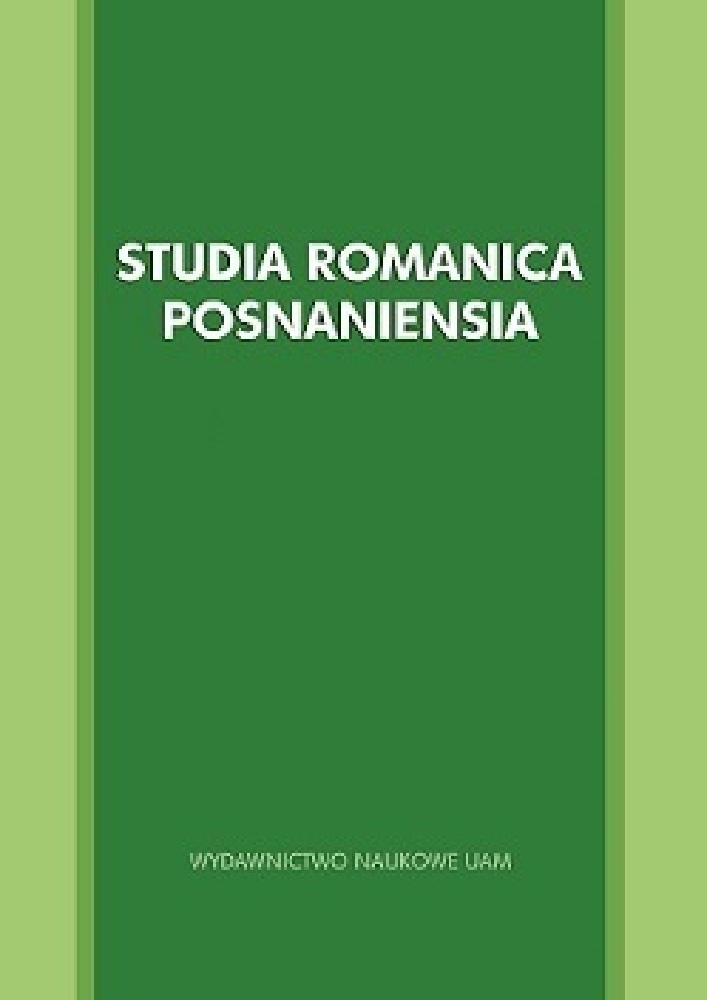Abstrakt
The article analyses the representation of Medellín in Fernando Vallejo’s 2013 novel Casablanca la bella in the context of Zygmunt Bauman’s liquid modernity concept and other cultural theories of the urban, which can be applied to Colombia in the context of omnipresence of violence. The analysis proves that the narrator-protagonist, disappointed with the modernity in Colombian context, is incapable of accepting the changes that the city as well as the country have suffered during his life and uses the descriptions of the urban space for social criticism. The conclusion is that the narrator-protagonist obsessively tries to re-actualize the past and persists in linking to it as he does not see any point of reference in the present nor any positive perspective for Colombia in a foreseeable future.
Bibliografia
Aristizábal, J.C. (2012). Gazing Backwards in Fernando Vallejo. A Contra Corriente, 10, 1, 147-170.
Aristizábal, J.C. (2015). Fiel a su corriente: las repeticiones de Fernando Vallejo en Casablanca la bella.
Cuadernos de literatura, 19, 37, 204-218. Recuperado de: https://doi.org/10.11144/Javeriana.cl19-37.fasc [consulta: 13.02.2021].
Bauman, Z. (2007). Płynne życie (trad. T. Kunz). Kraków: Wydawnictwo Literackie (originalmente publicado en 2005).
Bauman, Z. (2008a). Płynny lęk (trad. J. Margański). Kraków: Wydawnictwo Literackie (originalmente publicado en 2006).
Bauman, Z. (2008b). Wspólnota (trad. J. Margański). Kraków: Wydawnictwo Literackie (originalmente publicado en 2001).
Bauman Z. (2010). Żyjąc w czasie pożyczonym (trad. T. Kunz). Kraków: Wydawnictwo Literackie (originalmente publicado en 2010).
Broseta A. (2021, febrero 2). Mejores ciudades para vivir en Colombia. Recuperado de: https://www.rankia.co/blog/mejores-opiniones-colombia/3120172-mejores-ciudades-para-vivir-colombia-2021 [consulta: 13.02.2021].
Forero Gómez, A.F. (2011). Crítica y nostalgia en la narrativa de Fernando Vallejo: una forma de afrontar la crisis de la modernidad. Recuperado de: Iowa Research Online, http://ir.uiowa.edu/etd/964/ [consulta: 13.02.2021].
Lipovetsky, G. (2000). La era del vacío (trad. J. Vinyoli y M. Pendanx). Barcelona: Anagrama (originalmente publicado en 1983).
Silva, A. (2006). Imaginarios urbanos. Bogotá: Arango Editores (originalmente publicado en 1992).
Torres, A. (2010). Lenguaje y violencia en La Virgen de los sicarios de Fernando Vallejo. Estudis Romànics, 32, 331-338. Recuperado de: http://www.raco.cat/index.php/estudis/article/viewFile/246886/330768 [consulta: 13.02.2021].
Vallejo, F. (2013). Casablanca la bella. Madrid: Alfaguara.
Licencja
- Autor oświadcza, że przysługują mu osobiste i majątkowe prawa autorskie do Utworu oraz że nie są one ograniczone w zakresie objętym niniejszą Umową, oraz że utwór jest dziełem oryginalnym i nie narusza majątkowych lub osobistych praw autorskich innych osób.
- Autor udziela Uniwersytetowi im. Adama Mickiewicza w Poznaniu niewyłącznej i nieodpłatnej licencji na korzystanie z Utworu bez ograniczeń terytorialnych i przez czas nieokreślony na następujących polach eksploatacji:
2.1. wytwarzanie określoną techniką egzemplarzy Utworu, w tym techniką drukarską, reprograficzną, zapisu magnetycznego oraz techniką cyfrową;
2.2. wprowadzanie do obrotu, użyczenie lub najem oryginału albo egzemplarzy Utworu;
2.3. publiczne wykonanie, wystawienie, wyświetlenie, odtworzenie oraz nadawanie i reemitowanie, a także publiczne udostępnianie Utworu w taki sposób, aby każdy mógł mieć do niego dostęp w miejscu i w czasie przez siebie wybranym;
2.4. włączenie Utworu w skład utworu zbiorowego;
2.5. wprowadzanie Utworu w postacie elektronicznej na platformy elektroniczne lub inne wprowadzanie Utworu w postaci elektronicznej do Internetu, Intranetu, Extranetu lub innej sieci;
2.6. rozpowszechnianie Utworu w postaci elektronicznej w Internecie, Intranecie, Extranetu lub innej sieci, w pracy zbiorowej jak również samodzielnie;
2.7. udostępnianie Utworu w wersji elektronicznej w taki sposób, by każdy mógł mieć do niego dostęp w miejscu i w czasie przez siebie wybranym, w szczególności za pośrednictwem Internetu, Intranetu, Extranetu lin innej sieci;
2.8. udostępnianie Utworu zgodnie z wzorcem licencji Attribution-NonCommercial-ShareAlike 4.0 International (CC BY-NC-SA 4.0) lub innej wersji językowej tej licencji lub którejkolwiek późniejszej wersji tej licencji, opublikowanej przez organizację Creative Commons. - Autor zezwala Uniwersytetowi im. Adama Mickiewicza w Poznaniu na:
3.1. nieodpłatne korzystanie i rozporządzanie prawami do opracowań Utworu i tymi opracowaniami.
3.2. wysyłanie metadanych Utworu oraz Utworu do komercyjnych i niekomercyjnych baz danych indeksujących czasopisma. - Autor upoważnia i zobowiązuje Uniwersytet im. Adama Mickiewicza w Poznaniu do udzielania osobom trzecim dalszych licencji (sublicencji) do Utworu oraz do innych materiałów, w tym utworów zależnych lub opracowań zawierających lub powstałych w oparciu o Utwór, przy czym postanowienia takich sublicencji będą tożsame z wzorcem licencji Attribution-NonCommercial-ShareAlike 4.0 International (CC BY-NC-SA 4.0) lub innej wersji językowej tej licencji lub którejkolwiek późniejszej wersji tej licencji, opublikowanej przez organizację Creative Commons Tym samym uprawnia wszystkich zainteresowanych do korzystania z utworu wyłącznie w celach niekomercyjnych pod następującymi warunkami:
4.1. uznanie autorstwa czyli obowiązek podania wraz z rozpowszechnionym utworem informacji, o autorstwie tytule, źródle (odnośniki do oryginalnego utworu, doi) oraz samej licencji;
4.2. na tych samych warunkach, wolno rozpowszechniać utwory zależne jedynie na licencji identycznej to tej, na jakiej udostępniono utwór oryginalny. - Uniwersytet im. Adama Mickiewicza w Poznaniu jest zobowiązany do:
5.1. udostępniania Utworu w taki sposób, aby każdy mógł mieć do niego dostęp w miejscu i w czasie przez siebie wybranym bez ograniczeń technicznych;
5.2. poprawnego informowania osób, którym Utwór będzie udostępniany o udzielonych im sublicencjach w sposób umożliwiający odbiorcom zapoznanie się z nimi.
Pozostałe postanowienia
- Uniwersytet im. Adama Mickiewicza w Poznaniu zachowuje prawo do czasopisma jako całości (układ, forma graficzna, tytuł, projekt okładki, logo itp.).

